IndiaWilds Newsletter Vol. 12 Issue VI
ISSN 2394 – 6946
Ice on Fire
We the human beings are just one species among numerous other species in the Planet Earth. However, our unrestrained population increase and disproportionate use of the natural resources is posing a grave threat to nature and hence on our own existence.
Since the advent of industrial revolution, our consumption of fossil fuels has increased and along with our new high-carbon lifestyle, the global ambient temperatures have been continuously on the rise. This is causing massive changes to Earth’s climate. As a result even the forces of nature have changed their rules. They are no longer predictable.
Record Heat in Siberia:
The Siberian tundra, which holds the world record for low temperatures, is now facing extreme high temperatures. Verkhoyansk, a town in Sakha republic and located above the Arctic Circle has a lowest temperature record of -68 °C. Verkhoyansk is now facing a heat wave which is giving rise to forest fires and has recorded 38 degrees centigrade (100. 4°F) on 20th June, 2020. This is the maximum temperature ever recorded in the Arctic. In the Sakha Republic, more than 275,000 hectares of forests are burning.
Forest Fires:
These forest fires are very alarming from a Climate Change perspective as these forests and shrub ecosystems are either located above peat or above permafrost. World over, peat bogs hold lot of carbon. So when there is forest fire, lot of carbon is released into the atmosphere. Similarly forest fires also release carbon stored in the permafrost.
The arctic forests have predominantly coniferous trees. The cone like needles of these trees drop in the winter. However, due to very low temperatures the cone needles don’t decompose and remain buried in the permafrost. The cone needles contain monoterpenes, diterpenes and a host of essential oils. People in many parts of the world, including people in India, use the cone needles of coniferous trees to light a fire. During wildfires these cones needles, which had remained undecomposed in the soil, burn vigorously. Coupled with the strong arctic winds, the forest fires increase in intensity and spread fast. These massive forest fires act as a feedback in further increasing the temperature to melt the permafrost and release more carbon into the atmosphere.
These kinds of massive high temperatures are going to melt a lot of permafrost in the Siberian tundra. Recently researchers have suggested that the Carbon released through boreal fires could considerably accelerate Arctic warming. Earlier this boreal fire occurrence mechanisms and dynamics was largely unknown. In a paper titled “Extensive fires in southeastern Siberian permafrost linked to preceding Arctic Oscillation” (Jin-Soo Kim et. al.; Science Advances, Jan 2020, DOI: 10.1126/sciadv.aax3308) researchers have said “It is found that the annual burned area increased when a positive Arctic Oscillation (AO) takes place in early months of the year, despite peak fire season occurring 1 to 2 months later. A local high-pressure system linked to the AO drives a high-temperature anomaly in late winter, causing premature snowmelt. This causes earlier ground surface exposure and drier ground in spring due to enhanced evaporation, promoting fire spreading. Recently, southeastern Siberia has experienced warming and snow retreat; therefore, southeastern Siberia requires appropriate fire management strategies to prevent massive carbon release and accelerated global warming”.
Climate Change knows no Borders:
These massive forest fires give rise to heavy smoke layer in the sky and the air quality in different countries, thousands of kilometres away from the arctic region, is impacted. These smoke layers contain many thousands of tiny particles, which cause massive respiratory problems to people. The emissions from automobiles and industries in the cities are already causing air pollution in many large cities. As a result people are facing health issues. As study in USA had found that kids and teenagers exposed to air pollution have damaged DNA in form of short telomere. (https://www.indiawilds.com/diary/indiawilds-newsletter-vol-9-issue-viii/)
The length of telomere shortening was directly proportional to intensity of vehicle exhaust. The smoke layer due to the forest fires will exacerbate respiratory health problems as well as maim our kids forever by changing their DNA. So the world has to wake up to the reality that even if you are far away from arctic, you can’t escape as climate change knows no borders.
In August 2019, an estimated 7 million acres were on fire in Siberia and Russia had to send military transport aircraft and helicopters to fight the fire. Nevertheless, due to low human populations, the wildfires in arctic is still seen as happening in a far distant place. However, the heat waves are also resulting in forest fires in other places. Recently Australia faced massive forest fires. In 2019, Alaska had massive forest fires and had to spend more than $150 million dollars to contain the forest fires from reaching human settlements.
Permafrost melting:
The high ambient temperatures and melting of the permafrost is not just limited to Siberian tundra. When a soil and rock remains at or below 0 degree centigrade for at least two years, it is classified as permafrost. About 25% of the northern hemisphere is covered by permafrost. So permafrost occurs in roughly about 23 million square kilometres of area in the northern hemisphere. This permafrost layer used to reflect back the sunrays. Melting of the permafrost reduces the area which can reflect back the sunrays. The places which used to reflect sunlight now start absorbing most of it. As a result the temperature keeps on increasing which gives rise to even more melting of permafrost.
Polar bears on Peril:
The climate change related melting of sea ice is causing massive problems for an iconic species – the polar bears. Without seaice polarbears can’t hunt their favourite food – the seals. So they have to swim far more distances in search of food and in the process spend more energy. In June 2019, a polar bear walked 1500 km south and away from the arctic in search of food. This polar bear was found in an emaciated condition in the industrial city of Norilsk and didn’t react to people moving close to it. (https://siberiantimes.com/ecology/casestudy/news/starving-polar-bear-can-hardly-move-say-residents-of-norilsk/ )

The polar bear was filmed by teenagers who said they stood some 40 or 50 metres away, and it showed no sign of aggression. Picture- Zapolyarnaya Pravda
If the Siberian permafrost heats up then polar bears will not be able hunt. Their body insulation is not designed to bear the heat. So this iconic species is likely to soon get extinct, perhaps in our lifetimes.
Sea level rise & Flooding:
The melting of the permafrost and polar ice caps will also result in huge amounts of water in the sea. The increase in sealevel will flood many cities. The USA federal Government now wants to build a wall to protect coastal Miami-Dade from hurricanes and flooding which are going to be stronger due to climate change. This plan will cost a massive $4.6 billion dollars. (https://www.miamiherald.com/news/local/environment/article243276326.html)
This plan has been drafted by the Army Corps of Engineers. In 2019, Venice was flooded. Many ancient structures and museums were flooded and artwork and artifacts damaged. (https://www.indiawilds.com/diary/indiawilds-newsletter-vol-11-issue-xi/ ) In near future many countries will be forced to wake up to the issue of flooding caused by Climate Change and its massive economic impact.
Melting Glaciers:
The melting of the permafrost will also impact another area – tourism. Glaciers are melting and receding. So tourist infrastructure in some places becomes redundant. In Iceland the Government had built visitor centre few hundred meters from the the Vatnajökull glacier tongue. Now the glacier has receded around 1.5 kms. In Norway, in 2019 visitors were astonished to find that ice has vanished in many landscapes leaving them disappointed. In India, in ladakh local communities depend on the ice melt from the glaciers for their water needs as well as crops. However, the receding glaciers is massively impacting their life and lifestyle.
Our Planet Earth has been gripped by a full blown Climate Crisis. It is time we realise that Climate Change is hitting our lives in myriad ways. The intricate linkage between melting of polar ice caps, permafrost, sea level rise, forest fires, heat waves, increased cyclones and landslides and pandemics have to be explained to the people at large. Only then Climate Crisis can become a national agenda. Else, Government will continue in its short-sighted approach and keep on sacrificing our forests which will further fuel climate change.
Peace Lily : An efficient air-purifier
By Rashmi Rekha Patra
Conservation News:
750 Tigers died in India in the last 8 years:
Government issues advisory to streamline the process for import & possession of exotic live species
Exotic live species are animal or plant species moved from their original range (location) to a new one. These species are introduced to a new location most often by people. Manycitizen of the country have kept CITES (Convention of International Trade in Endangered Species)
enlisted exotic animal species in their possession but there is no unified information system available of such stock of species at the State/Central level. Ministry of Environment, Forest and Climate Change has decided to collect stock information from the holders of such species through voluntary disclosure in next six months.
The registration will be done for the stock of animals, new progeny, as well as for import and exchange. This will help in better management of the species and guide the holders about proper veterinary care, housing and other aspects of well-being of the species. The database of exotic animals will also help in control and management of zoonotic diseases on which guidance would be available from time to time to ensure safety of animals and humans.
The declarer would not be required to produce any documentation in relation to the exotic live species if the same has been declared within six months of the date of issue of the advisory. For any declaration made after 6 months, the declarer shall be required to comply with the documentation requirement under the extant laws and regulations.
Holders of such species have to visit the website (www.parivesh.nic.in)and fill up the requisite forms in order to complete the stock registration process.
Urban Forest scheme to develop 200 ‘Nagar Van’ across India in next 5 years
On the occasion of World Environment Day, the Government of India announced implementation of the Nagar van scheme to develop 200 Urban Forests across the country in next five years with a renewed focus on people’s participation and collaboration between Forest Department, Municipal bodies, NGOs, Corporates and local citizens. World Environment Day (WED) is celebrated on 5th June every year. Ministry of Environment, Forest & Climate Change celebrates WED focusing on the theme declared by United Nation’s Environment Programme (UNEP) and organizes several events. This year’s theme is ‘Biodiversity’. In view of the prevalent situation due to COVID-19 pandemic the ministry held virtual celebrations of World Environment Day on this year’s theme with focus on Nagar Van (Urban Forests).
Releasing a brochure on the best practices on Urban Forests and announcing the Nagar Van scheme, Union Environment Minister, Shri Prakash Javadekar said that these forests will work as lungs of the cities and will primarily be on the forest land in the City or any other vacant land offered by local urban local bodies.
It would be pertinent to mention that MoEF&CC under Shri Javadekar is actively diverting India’s forests for dams, mines, industries and other projects. During the lockdown period, MoEF&CC was overactive in changing the EIA (Environment Impact Assessment) norms for pharmaceutical companies and exempted them from conducting EIA. The reason given was that for Covid-19 it is important to have more drugs manufacturing. Similarly in April, MoEF&CC gave permission to a host of forest diversions. Despite this, Shri Javadekar with a straight face said the theme for this years Environment day is “Time for Nature” with special focus on biodiversity. He said “thumb rule is that if we protect nature, nature protects us”
Stressing on this year’s focus on Biodiversity the Environment Minister said, “India has 8 percent of world’s biodiversity, despite having many constraint like only 2.5 % of the world’s landmass, has to carry 16% of human as well as cattle population and having only 4% of fresh water sources; the mega biodiversity that we have is the result of Indian ethos which is to be in sync with the nature.” Wish the Environment Minister walks the talk and respects India’s ethos and stops rampant diversion of India’s forests for industrial projects, mines, dams etc.
Cabinet approves MoU between India & Bhutan on Cooperation in areas of Environment
The Union Cabinet chaired by the Prime Minister, Shri Narendra Modi has given its approval for signing the Memorandum of Understanding between the Government of the Republic of India and the Royal Government of Bhutan on Cooperation in the areas of Environment on 3rd June.
Details:
The Memorandum of Understanding will enable establishment and promotion of closer and long-term cooperation between the two countries in the field of environment protection and management of natural resources on the basis of equity, reciprocity and mutual benefits, taking into account the applicable laws and legal provisions in each country.
Keeping in view the bilateral interest of both sides and mutually agreed priorities, a Memorandum of Understanding covering the following areas of environment has been considered:
• Air;
• Waste;
• Chemical Management;
• Climate Change;
• Any other areas jointly decided upon.
For more details click on the below link –
Equipment Discussions:
Venus Optics unveils three new ultra-wide cine lenses:
Panasonic launches G100 vLogging camera:
Panasonic has launched a vlogging camera Lumix G100 with sound from OZO audio of Nokia.
It is marketed as a stepup from a smartphone with its larger 4/3 sensor size. It has a 20.3 Megapixel sensor. Maximum still shot resolution is 5184 x 3888 and can shoot in jpeg and raw.
The G100 camera doesn’t have a low pass filter infront of the sensor and together with the Venus engine it can create sharp photos and videos.
The minimum ISO is ISO 200 and maximum ISO sensitivity is ISO 25600.
The Panasonic G100 comes with a 12-32mm f3.5-5.6 ASPH lens. This lens because of being mated to a micro 4/3 sensor acts like a 24-64mm (35 mm equivalent) lens. It has a retractable design, so is compact. There are three aspherical elements and one extra-low dispersion element to control chromatic aberration and spherical aberration. There is a built-in autofocus motor. It is to be seen how good the AF in real world applications.
For more details click the below link –
Natural History
COUNTRY NOTEBOOK: M. Krishnan: ‘Friendly Hobgoblins‘ shared By Saktipada Panigrahi
https://www.indiawilds.com/forums/showthread.php?8852-Country-notebook-m-krishnan&p=44094#post44094
Wildlife Photography
Jungle Cat in Bandhavgarh by Sabyasachi Patra
https://www.indiawilds.com/forums/showthread.php?19619-Jungle-Cat-ready-to-pounce
Leopard by Shyamala Kumar
https://www.indiawilds.com/forums/showthread.php?19610-The-Trees-have-eyes
Golden Jackal by Sucheth Lingachar
https://www.indiawilds.com/forums/showthread.php?19606-Golden-Jackal-Kabini
Tigress by V S Sankar
https://www.indiawilds.com/forums/showthread.php?19607-Tigress-doing-a-Cat-Walk!
Rhino in Manas by Samrat Sarkar
https://www.indiawilds.com/forums/showthread.php?19605-Rhino-of-Manas
Black-headed-Ibis with snake by Mrudul Godbole
https://www.indiawilds.com/forums/showthread.php?19602-Black-headed-Ibis-with-snake
Changeable Hawk Eagle dark morph by Sabyasachi Patra
https://www.indiawilds.com/forums/showthread.php?19618-Sundarbans-Changeable-Hawk-Eagle-dark-morph
Spider by Prajwal Ullal
https://www.indiawilds.com/forums/showthread.php?19616-Curled-in-to-comfort
This is the 138th issue of IndiaWilds. A waterfall image adorns the cover page. In the land of the tiger why a waterfall image for cover page would be the question by many. This is an era of Climate Change. The world is gripped by a climate crisis. Our weather patterns have changed. Monsoons have been delayed this year. The intensity and span of the rains in the monsoon season has changed. So some places face unprecedented rainfalls and some other places face drought. Our himalayan glaciers are melting and receding. Since the media doesn’t travel to the far off borders of India, the common man and women are not aware that with the receding glaciers our rainfed rivers are going to be majorly impacted. History has taught us that many a civilisations have perished due to lack of water.
India’s human population is rapidly expanding and has reached 1.4 billion. We are poised to soon overtake China and become the most populous country in the world. Such a massive population needs water. To make matters worse, development and job opportunities are concentrated in the big cities. So people tend to migrate and concentrate in the big cities. That creates even more demands on water. Sand mining of our rivers to provide sand for construction is killing our rivers. Without sand in the rivers water cannot percolate and hence our rivers are dying. Cutting off trees in the hills, forests and river banks is also impacting the rivers as many smaller streams are dying. As a country if we are not cautious about the impact of Climate Change on our lives, then future is going to be bleak. It is important that we raise awareness among people and convince the Government to protect nature so that we can escape from the vagaries of climate change.
I look forward to your inputs and support in preserving the last tracts of wilderness and wildlife left in our beautiful country and raising awareness about it. For other interesting articles and images check –
http://www.indi
To post in the IndiaWilds forums, you can register free of cost using your Full Name as user id at:
http://www.indiawilds.com/forums/register.php
If you are already a member of IndiaWilds and have forgotten your user id and/or password you can mail to:
administrator@indiawilds.com
If you want to contribute original articles, or for any image enquiries please send a mail to:
administrator@indiawilds.com
Regards,
Sabyasachi Patra
Profile | Contact Us | Facebook | Diary | Equipment reviews | Forums | IndiaWilds You Tube Channel
Please post your views and feedback in the comments below.
- GoPro Hero 12 Black - 6 September,2023
- Leopards: The Last Stand - 2 July,2023
- Drifting in the Waters of Sundarbans - 26 March,2023


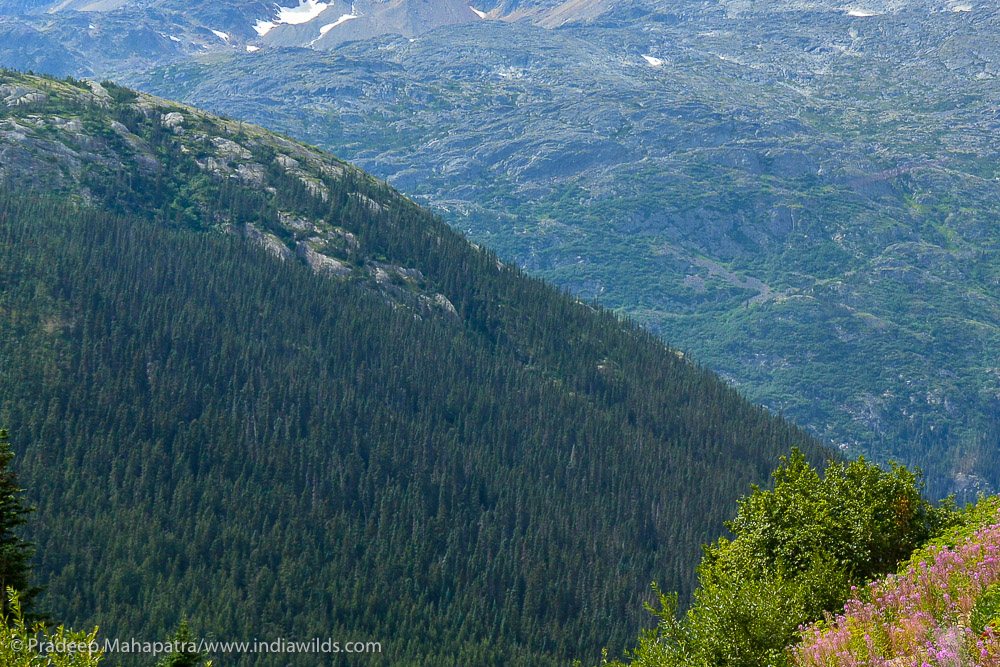
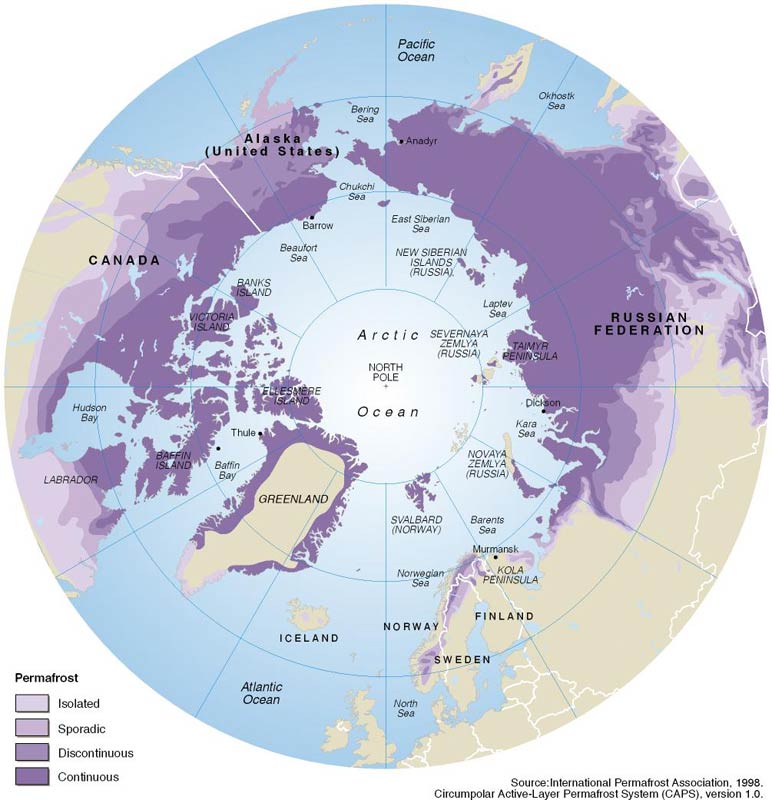

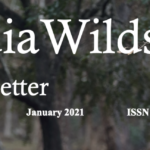
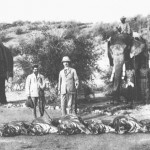
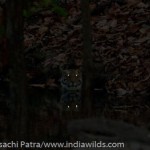







Leave a Reply